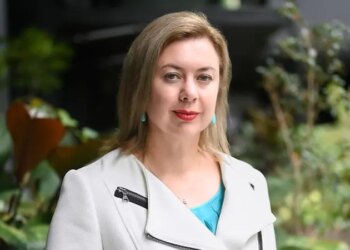Changes to how exempt current pension income (ECPI) is determined, announced in the 2019–20 federal budget, are due to come into force from 1 July 2021.
While draft legislation is yet to be released, the proposals suggest SMSF trustees will be given a choice over whether to use the proportionate method or segregated method when claiming ECPI for funds that are solely in retirement phase for a period in an income year.
In a recent survey by Accurium, fewer than one in five (18 per cent) respondents said they wanted to see these proposed changes come into force.
“The changes are intended to make the system simpler. However, as we and other commentators have noted, they may end up having the opposite effect, creating more complexity for trustees and their advisers,” Accurium said.
“There was only slightly more support from respondents (21 per cent) for the status quo. This accords with our experience where we find many practitioners struggle with the complexities of the current rules.”
Furthermore, understanding whether a fund has disregarded small fund assets (DSFA) or not and how this impacts the ECPI calculation has become an “ongoing bugbear”, according to Accurium.
It would mean the funds that don’t have DSFA can find themselves having to use both the proportionate and segregated methods in the same year due to assets being deemed to be segregated.
Accurium noted it requires practitioners applying for an actuary’s certificate to declare if a fund has DSFA.
“However, our analysis shows that over a third of SMSFs declaring that they have DSFA have no members with an opening balance of over $1.6 million,” Accurium continued.
“The definition of DSFA looks at members’ total superannuation balances, including balances held outside their SMSF, so it is possible for an SMSF to have DSFA and yet all its members have balances in the fund below the $1.6 million threshold.
“However, it is certainly surprising that this figure is so high and raises the question of whether some SMSFs are misreporting their DSFA status. Many are unfamiliar with the relatively new concept of ‘deemed’ segregation and find using the proportionate method for all income a simpler approach.
“The fact that four in five practitioners surveyed want to see the rules changed certainly suggests the current system could be improved.”
Removing segregation altogether the ideal option
In the Accurium survey, it had revealed that around 20 per cent wanted to go back to the pre-2017 approach where, unless a fund was 100 per cent in retirement phase for the entire year, the default approach was to use the proportionate method for claiming ECPI for all income.
However, the majority of SMSF practitioners (41 per cent) surveyed said they wanted to remove segregation altogether. This would remove segregation for SMSFs altogether with an exemption from the requirement for an actuary certificate if the fund is 100 per cent in the retirement phase for the entire income year.
Despite all the talk and industry presentations, using deliberate asset segregation strategies remains a very niche option for SMSFs, the report found. Recently, a technical specialist had also flagged that the use of segregation can be a complex undertaking.
Accurium’s analysis showed that fewer than 0.1 of a percentage point of funds are using an elected segregation strategy alongside a separate pool of unsegregated assets. However, the introduction of deemed segregation in 2017 forced thousands of funds into using this combined approach by default.
“Add the complexity of determining whether a fund has disregarded small fund assets and it’s understandable that many practitioners are keen to do away with the segregated method for SMSFs altogether,” the report said.
“Applying the disregarded small fund assets definition to all SMSFs, not just those with members with total super balances over $1.6 million, would provide a simple way of achieving this. Provided that funds that are 100 per cent in retirement phase are exempted from the requirement for an actuary’s certificate, this could significantly simplify administration.
“It would potentially come at the expense of higher tax bills for the small minority of SMSFs that are using segregation strategies to minimise their tax, but it seems this is a price many practitioners are willing to pay in return for reducing red tape.
“This option was the overwhelming favourite, with 41 per cent of practitioners surveyed saying removing segregation for SMSFs altogether was the change they most wanted to see.”



How about removing actuarial certificate requirements all together for those on Class and BGL as it automatically generates it for you, why are trustees paying for an actuary to instantly flick back the same thing that is sent to them! Red tape if ever I have seen it.
Your headline is wrong. It should read SMSF Practitioners, not SMSF Advisers. I do not believe these results are as valid as they are being portrayed as they have been primarily sourced from accountants who are seeking simplicity rather than advisers who are seeking strategic opportunity. If your sample base comprised SMSF Advisers, as your headline infers, I believe your 18% option would become over 50%